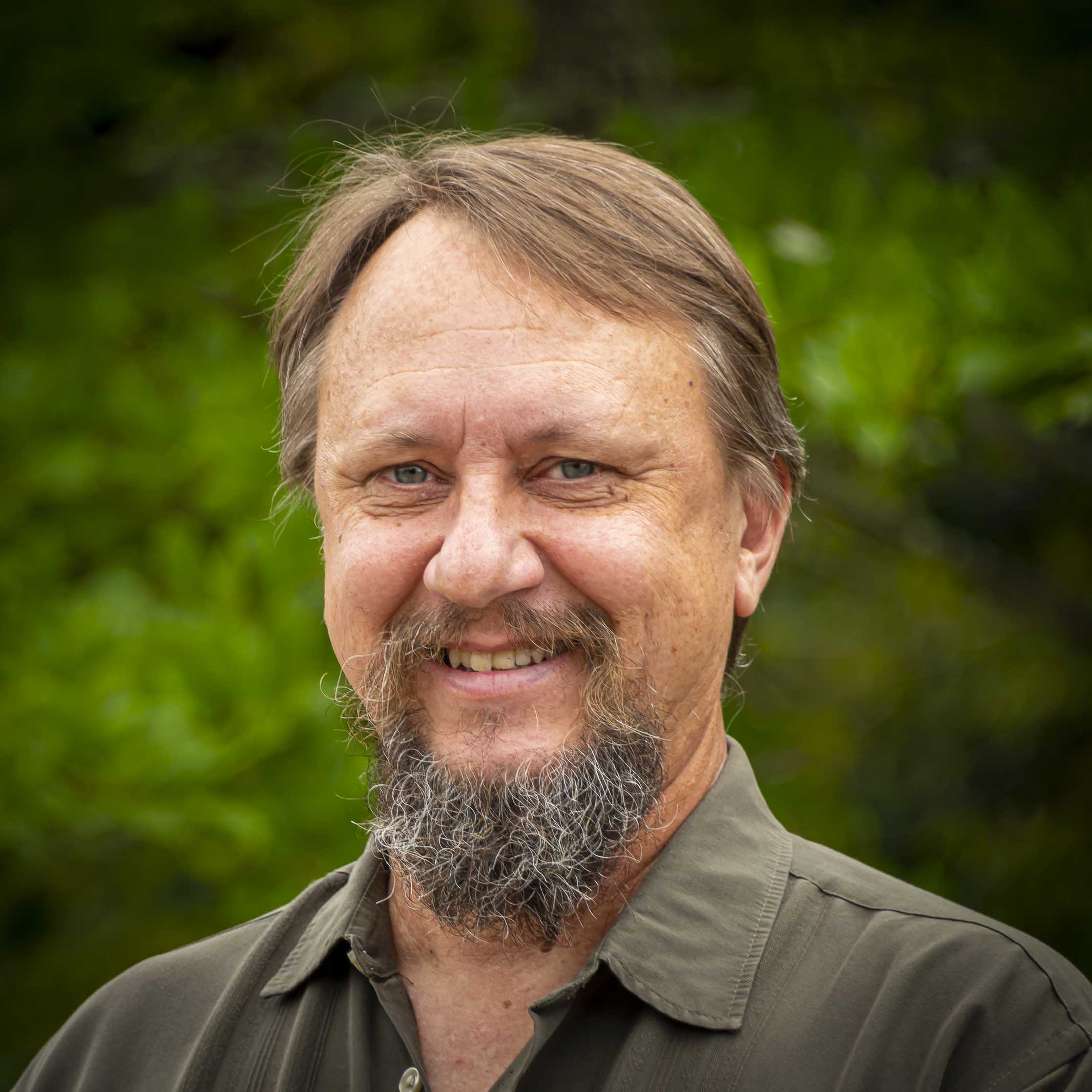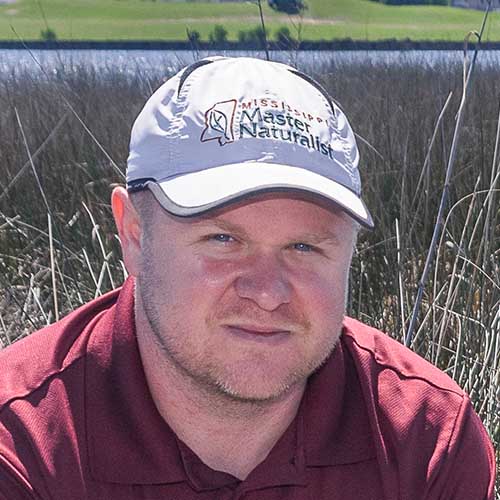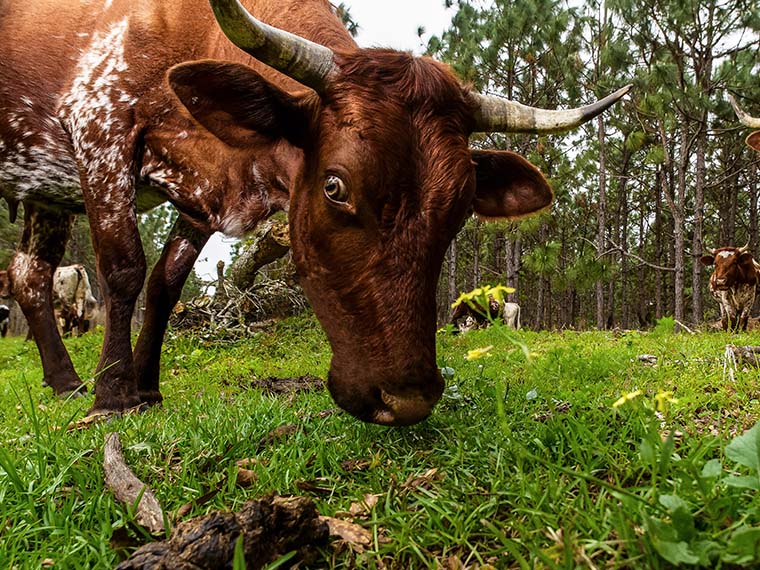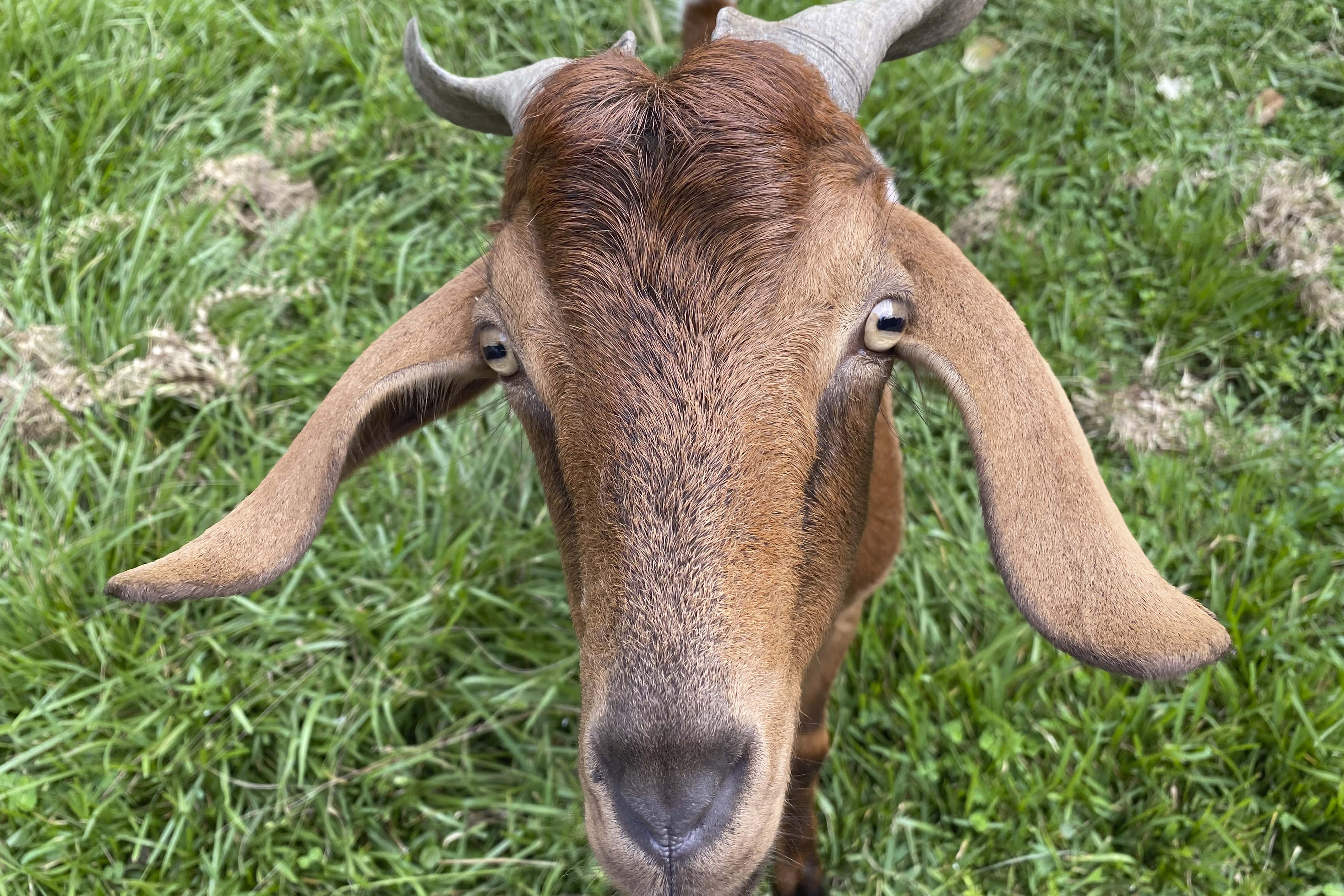The information presented on this page may be dated. It may refer to situations which have changed or people who are no longer affiliated with the university. It is archived as part of Mississippi State University's history.
Many years ago, large grazers, such as bison, roamed throughout the southeast United States, and their grazing helped shape the ecology and ecosystems of the area. Historically, livestock have been used to simulate grazing for habitat management purposes, but, in the last century, landowners and managers have leaned on controlled burns, chemicals, and mechanical removal to keep vegetation at bay.
At the same time, invasive species such as Chinese and Japanese privet, kudzu vine, and cogon grass have gained a strong foothold in these ecosystems—making land management, restoration, and conservation efforts more difficult.
Shifting weather patterns ushered in by a warming planet compound the challenges of habitat management in the modern era. Controlled burns are not an option during periods of prolonged drought, machines can't operate during heavy flooding, and herbicides can cause ecological damage. As weather patterns grow more extreme and unpredictable, Mississippi State University (MSU) scientists are looking for alternative land management methods that are cost-effective and both less intrusive and more climate resilient.
Dr. Eric Sparks, associate extension professor in wildlife, fisheries and aquaculture, and director of coastal and marine extension at MSU's Coastal Research and Extension Center, has begun an effort to bring the age-old practice of conservation grazing back to the coast. Sparks, along with Dr. Timothy Schauwecker, Mississippi Agricultural and Forestry Experiment Station scientist and professor in the Department of Landscape Architecture, and colleagues have partnered with the Grand Bay National Estuarine Research Reserve (NERR) and other research reserves in Texas, Alabama, and Florida. Together, they are working to develop a plan that will apply modern scientific knowledge to the age-old practice of conservation grazing, helping landowners and managers across the Gulf Coast make informed decisions about if, when, where, and how to practice conservation grazing on their properties.
Climate change aside, the diverse ecology of the coastal plains presents a host of habitat management challenges.
"The pine savannas found along the coast stay seasonally wet, and just small changes in elevation will change the plant community that you see in a given area," said Schauwecker, who has a background in terrestrial and disturbance ecology. "The estuaries and small watersheds along the coastline can also be difficult to manage using conventional methods."
Add climate change to the mix, and the tools on which managers have relied for decades are becoming less and less useful. Sparks has met with natural resource managers from across the region, and they agree that climate change is making traditional management techniques much more difficult.
"This year, for instance, we're in a severe drought, and prescribed fires have a higher tendency to get out of control. A couple of years ago, we got a year's worth of rain in six months, and both burning and mechanical clearing are difficult in those conditions," Sparks said.
In addition to irregular weather patterns, urban sprawl poses challenges for habitat management. As construction inches closer to NERR sites and other publicly managed lands, prescribed fire and even chemical applications may be prohibited because of the propensity of smoke or chemicals to enter populated areas with shifting winds.
The growing difficulty of traditional management methods combined with their impacts on air and water quality make conservation grazing an appealing option for both private landowners and public institutions. Equally important, grazing encourages biodiversity and helps threatened and endangered native plant species thrive.
"The presence of rare species is a good indicator of ecosystem health," said Schauwecker. "Research with grazers in the Midwest has shown that one of the region's rare plant species depended on hoof action for its germination patterns."
Sparks started thinking about the Gulf Coast project when discussing habitat management with the Grand Bay NERR. He thought about his own home and property, where he raises goats.
"I've had goats for a long time, and I've noticed how my property has changed as a result of their grazing," he said. "And I realized that some of the results the NERR was looking for were already happening in my own backyard."
Along with Sparks, many other private landowners on the Gulf Coast use grazing livestock for land management. Moreover, results from a survey distributed by the team to producers across the Gulf Coast showed a high level of interest in the practice and valuable insight into producers' management needs. Yet, while research on conservation grazing is published abundantly in other parts of the U.S. and globally, research specific to the Gulf Coast uplands region is essentially nonexistent.
"We need solid research to inform the practice on a broader scale," he said. "State and federal resource agencies in the area can't point to any existing research to justify the implementation of this practice on public lands."
Sparks and his team are seeking funding opportunities to study practical application issues of conservation grazing across the Gulf Coast, such as timing and frequency of grazing to produce the desired vegetation response and the role of grazers, particularly goats.
"The gut of a goat is harsh on what it eats and can sterilize seeds," said Sparks.
"However, we do not know yet if material from common invasive plants in this area can survive goat or cattle digestive systems."
While they have yet to secure a grant for their Gulf-wide proposal, the team is seeking smaller opportunities to do research. One of Sparks's graduate students is writing a Davidson fellowship application to do a small part of this work at Weeks Bay NERR in Fairhope, Alabama. And Schauwecker is looking at an opportunity to test conservation grazing in a project he is working on in Oktibbeha County.
"I'm working with the Natural Resources Conservation Service to manage stream buffers, and we're having trouble trying to clear the grass buffer without setting fire to the adjacent forested buffer," he said. "I have an idea for an experiment, where we would burn half of the grass buffer and graze the other half and compare results."
While the research is just beginning on the Gulf Coast, both Sparks and Schauwecker are working tirelessly to keep the momentum going. They see a future where research fuels collaborations between scientists, livestock producers, and natural resource managers to establish conservation grazing as a complimentary or alternative means of coastal upland management.
"If the research shows that this is a beneficial thing to do and we develop guidelines to work with public lands, this could create an opportunity to build a new industry for livestock producers that doesn't currently exist in our part of the world," said Sparks. "So besides the environmental benefits, there are potential economic benefits to be gained by pursuing conservation grazing."
This research is funded by the Mississippi Agricultural and Forestry Experiment Station and the MSU Extension Service.
If the research shows that this is a beneficial thing to do and we develop guidelines to work with public lands, this could create an opportunity to build a new industry for livestock producers that doesn't currently exist in our part of the world. So, besides the environmental benefits, there are potential economic benefits to be gained by pursuing conservation grazing.
Dr. Eric Sparks
Behind the Science

Tim Schauwecker
Professor
Education: B.S., Landscape Contracting and Management, M.S., Ph.D., Biological Sciences, Mississippi State University
Years At MSU: 17
Focus: Restoration and management of biodiversity and water quality in developed and agricultural landscapes
Passion At Work: My primary goal is to make it possible for developed and disturbed landscapes to function ecologically as close as possible to their pre-disturbance condition.

Eric Sparks
Director, Coastal and Marine Extension; Associate Extension Professor
Education: B.S., Marine Biology, Troy University; Ph.D., Marine Sciences, University of South Alabama
Years At MSU: 9
Focus: Coastal conservation and restoration, marine debris and litter, and environmental stewardship
Passion At Work: I am extremely passionate about demystifying science so we can apply it to solve real-world problems.


